A brief history of the Suzuki GSX naked motorcycle range
As Suzuki rings the changes this month with an updated GSX-S1000, we take a look at how the GSX model came to be

THE arrival this week of Suzuki’s fully-updated GSX-S1000, just a few weeks after the arrival of the all-new 2021 GSX1300R Hayabusa, raises an obvious question: Just what is it about these Suzuki ‘GSX’ things?
New Suzuki Hayabusa 2021 Review
To appreciate the full story, you have to go way back 45 years to the creation of Suzuki’s first multi-cylinder four-stroke road bike.
Although the Japanese firm had produced the four-stroke single-cylinder Colleda 125 and 93cc machines as far back as 1955, thereafter virtually its entire output right up to 1976 had been increasingly sophisticated two-strokes – something aided enormously by Ernst Degner’s controversial defection from MZ to Suzuki in 1961 and also highlighted by Barry Sheene’s twin 500cc grand prix world championships in 1976 and 1977 aboard the world-beating RG500 square four.

By the mid-1970s, however, and with the ‘Big Four’ Japanese companies – Honda, Yamaha, Kawasaki and Suzuki – gaining increasing success with larger capacity machines, it was increasingly clear that bigger, multi-cylinder, four-stroke bikes were the way to go.
Honda had paved the way with its SOHC four-cylinder CB750 in 1969, the machine which today is considered the first ‘superbike’. Then Kawasaki raised the bar further with its DOHC, 903cc Z1 in 1972. Yamaha and Suzuki, however, remained historically and traditionally more committed to the two-stroke, even though the former had had considerable success with its ‘British-style’ XS650 twin launched in 1969.
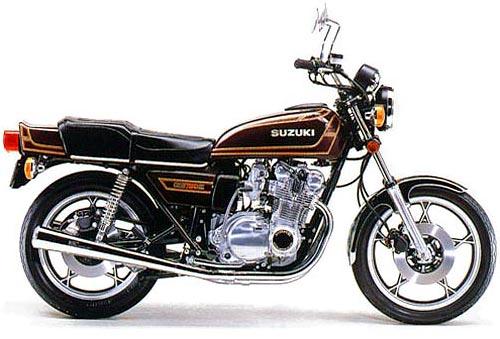
That all changed in 1976. That year, not only did Yamaha come out with its first, multi-cylinder four-stroke, the XS750 shaft-driven triple, Suzuki also launched its first four-stroke four – the GS750.
The GS750 was a truly landmark machine for Suzuki. Although outwardly conventional (and, considered by some to be little more than a copy of Kawasaki’s Z1 engine design) it actually marked the start of a whole new era.
Since 1971, Suzuki’s flagship motorcycle had been a two-stroke – the liquid-cooled, three-cylinder GT750. In 1974, however, the Japanese company attempted to change direction and move away from ‘strokers’ with its larger bikes, partly due to ever-tightening American emissions regulations, by creating a futuristic new flag bearer. The result was the radical, rotary-engined RE-5, which, although warmly welcomed by the press, in reality proved a sales disaster which almost sank the whole company.

In response, and desperate to get back on a more level footing, Suzuki then came up with the GS750, a fairly conventional, DOHC, two-valve four, but also one that Suzuki deliberately made as reliable and refined as possible and at the same time set a new standard for Japanese superbike handling.
The name, meanwhile – GS – standing for ‘Grand Sporting’ was chosen to distinguish it from Suzuki’s two-stroke ‘Grand Touring’ GTs.
Hugely successful and fastidiously engineered, the 1976 GS750 perhaps inevitably became the basis for a whole family of GS successors. A smaller GS550 arrived in 1977, which proved popular as a junior superbike. And in 1978 the GS1000 landed and became an instant success when, according to bikesport folklore, the legendary ‘Pops’ Yoshimura in just 50 days tuned the bike which was ridden to victory in the 1978 Daytona Superbike race by Steve McLaughlin. Later that year came victory at the prestigious Suzuka 8-Hour with the legendary Wes Cooley on board while Cooley would also go on to win the 1979 and 1980 AMA titles, successes which spawned the GS1000S ‘Cooley Replica’.
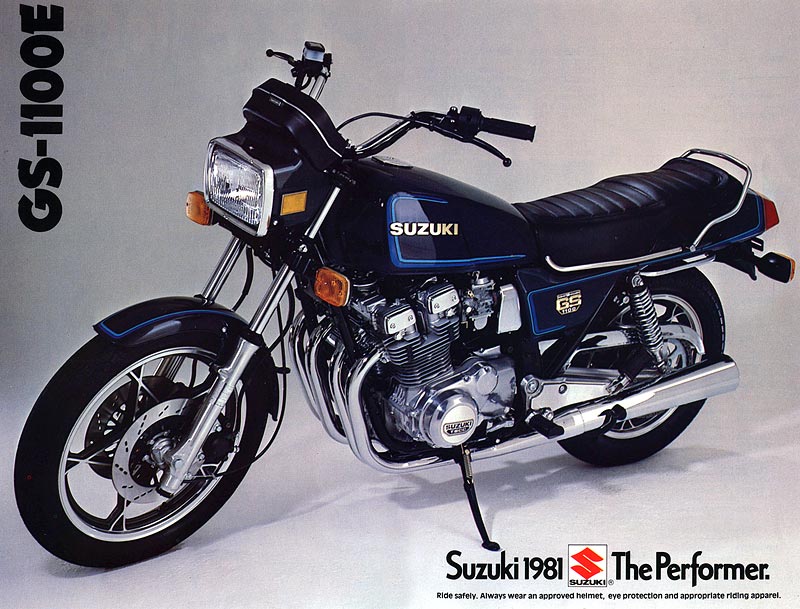
Suzuki’s next major development came in 1980 when the two-valve GS1000 was replaced by an enlarged, four-valve version, which also incorporated Suzuki’s new Twin Swirl Combustion Chamber (TSCC) technology. To mark this, the new bike was given the ‘X’ designation, which reputedly stood for ‘eXperimental, and the GSX had arrived. The first, the GSX1100, with a genuine 100bhp and 140mph potential, was the most powerful, fastest bike of its day, again spawning a whole family of Suzuki four-valve GSXs ranging from twin cylinder 250s and 400s, to 400, 550 and 750 fours and more.
Even more than that, however, the GSX then developed into a radical and varied range of bikes in its own right. That first GSX1100 led to 1981’s radical, futuristically-styled GSX1100S Katana. In 1984, Suzuki came up with the fully-faired GSX1100EF tourer. There was also the half-faired GSX1100ES of 1983, the later roadster, shaft-drive GSX1100G, and many more. In short, if you wanted a multi-cylinder four-stroke Suzuki in the early 1980s, you wanted a GSX.

Then, the final, ‘GSX-defining’ key development came in 1985. Following the success of Suzuki’s works GS1000-powered XR69 F1 racer, which was in turn followed by 1982’s aluminium-framed XR41, Suzuki decided to build an aluminium framed, lightweight, race-faired replica for the road. The result, in 1985, was the first ‘GSX-R’, the iconic GSX-R750F – with the ‘R’ standing for ‘Racing’.
That bike, as we all know, was enormously successful as well, itself spawning a whole family of variants ranging from 600 to 1000cc (plus also 250s and 400s in the home Japanese market) many of which live on both on road and track to this day. That sporting success in turn consigned the standard GSX to a more worthy, road-orientated future, but it also still led to a series of significant GSX machines.
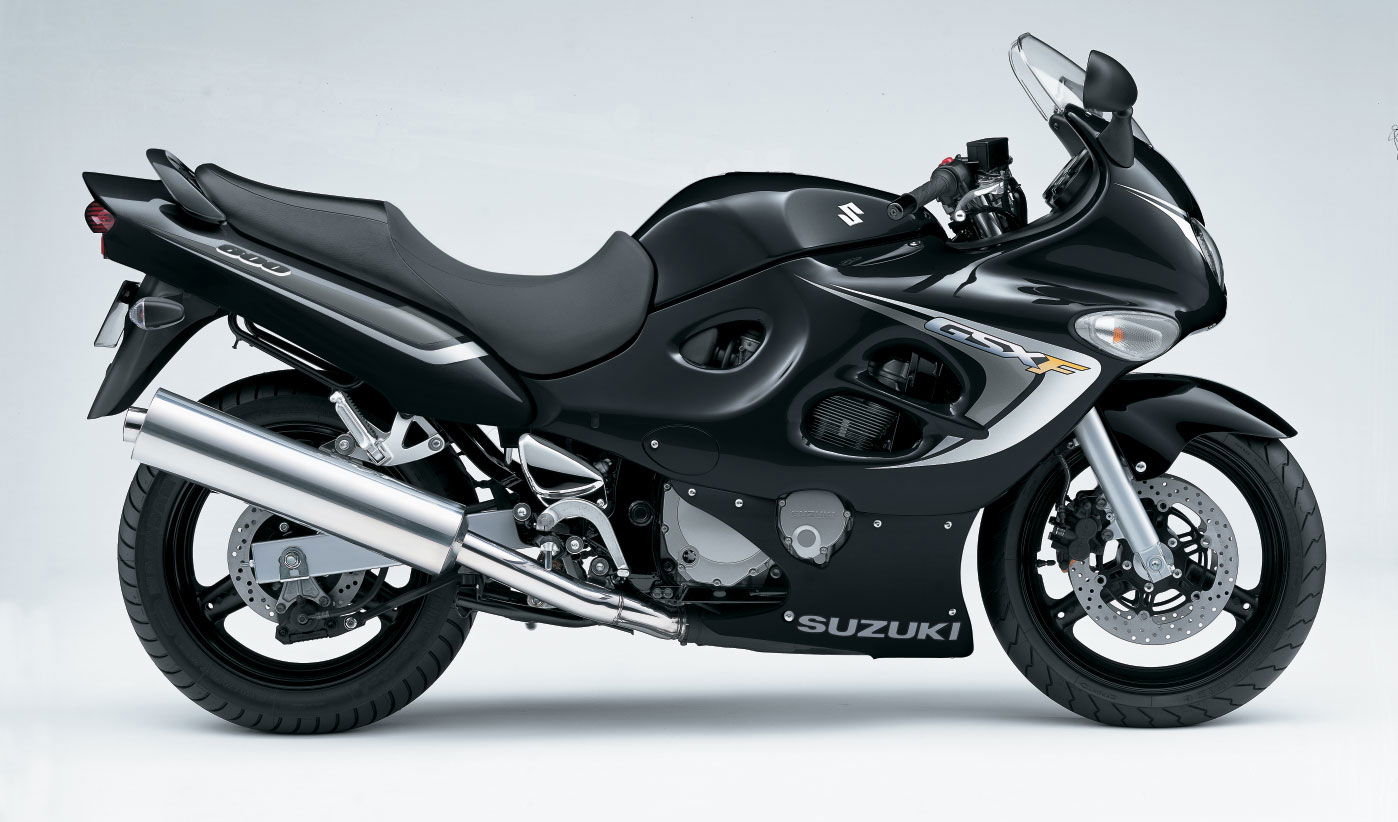
1988’s GSX600F was Suzuki’s answer to Honda’s CBR600F and, although less celebrated, and cruelly labelled by some ‘the Teapot’ due to its curvy, all-enclosing styling, was a popular success. Its larger sister, the GSX750F launched the same year, proved a bargain all-rounder.
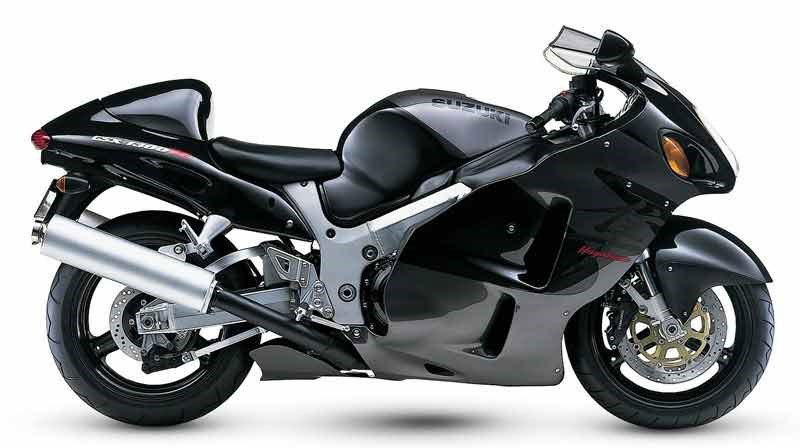
The first Hayabusa in 1999 not only broke the hyperbike mould and became the fastest production bike of all time, it was also, being a four-valve road bike, a GSX – the GSX1300R. The GSX1400 of 2001 was arguably the best big bore, retro-influenced, twin shock roadster of all and remains prized to this day while 2007’s Bandit-based GSX650F was a brilliantly affordable first big bike.
Finally, in more recent times, 2015’s GSX-S750 and its bigger brother, the GSX-S1000, revived the whole GSX roadster ethos and have proved popular successes for their versatility and value. No wonder Suzuki want to continue that success with the new version. The GSX story isn’t over quite yet!
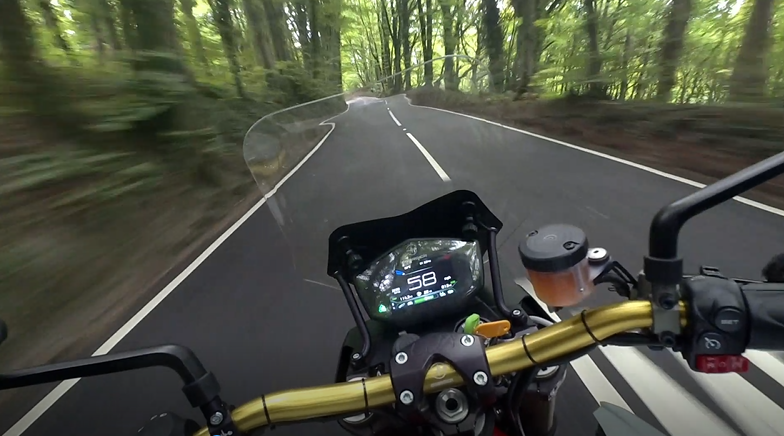
.JPG?width=1600)
